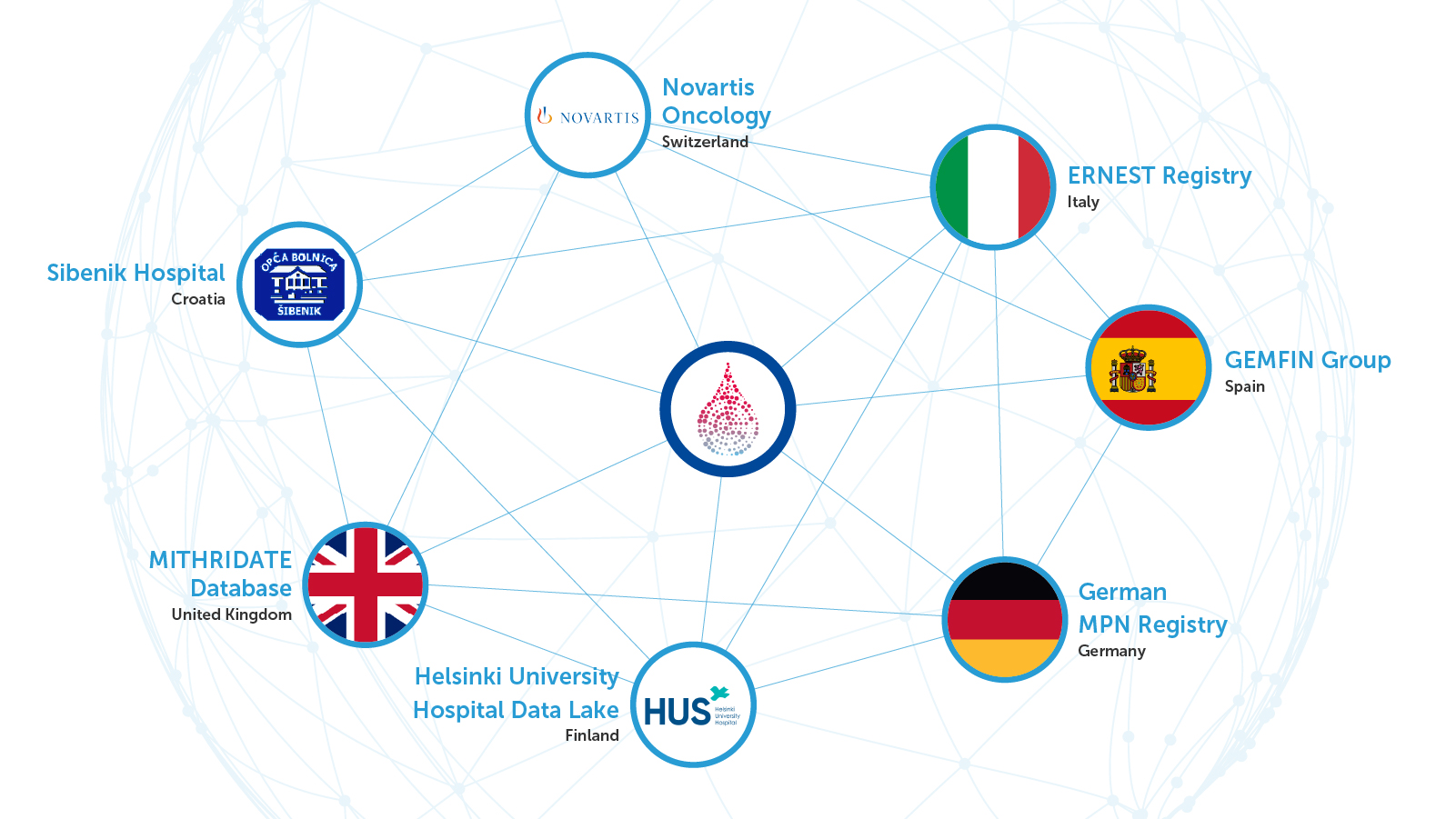Home> Research Projects> MPN-2: Using big data to improve risk prediction in patients with MPN
Polycythemia vera (PV) is a myeloproliferative neoplasm (MPN) characterized by thromboembolic events, which currently rank as the primary cause of disease-related death. Due to a paucity of robust data, important clinical questions still remain unresolved in the management of PV. These outstanding issues include detection of patients who have become resistant/intolerant to standard therapy and accurate prediction of residual thrombosis risk in treated patients.

Polycythemia vera (PV) is a type of myeloproliferative neoplasm (MPN) in which thromboembolic events are the primary driver of mortality. Hydroxyurea (HU) is the drug of choice for managing PV patients at high thromboembolic risk. However, up to a quarter of treated patients will ultimately become resistant or intolerant to HU, placing them at increased risk of both thrombosis and death. In addition, many PV patients treated with HU still carry a significant residual thromboembolic risk. Ruxolitinib is an EMA-approved treatment for HU resistant or intolerant PV patients in the second-line setting; however, its thrombotic effects have yet to be directly demonstrated in the real-world setting.
To overcome the current paucity of data in this important area of risk prediction in PV, researchers adopted a machine learning approach using mathematical models to analyze large numbers of data variables. This machine-learning analysis was applied to the US OPTUM PV database with the aim of identifying key risk factors able to predict HU resistance/intolerance and the development of thrombosis. Preliminary results from the analysis were presented at ASH 2019.
HARMONY will now take an active role in this project by harnessing the power of its Big Data platform to validate the data obtained in the OPTUM machine-learning analysis. This is of interest since the OPTUM is an US database and external validation with the European database HARMONY will add external reproducibility. External validation is an important step which adds strength to the data and confirms its reproducibility. While analyzing the data, HARMONY will also seek to answer important clinical questions in the management of PV which remain unresolved. These include predicting which patients will develop HU resistance and which HU-treated patients remain at risk of thromboembolic events, as well as elucidating whether Ruxolitinib treatment has a thrombosis-protective effect in PV patients with resistance or intolerance to HU.
Overall, this project aims to answer unresolved clinical questions and address existing unmet medical needs in the field of PV. Developing reliable predictors of HU resistance will enable clinical surveillance of at-risk patients to facilitate early recognition and response to this complication. Similarly, better tools for predicting which PV patients on HU treatment are at risk of thrombosis will enable strict control of cardiovascular and hematological parameters and optimized treatment. Ultimately, the outcomes from this project will therefore have important clinical applications which could improve the real-life management of PV patients.
Timeframe: Start 15 February 2020 | End 30 June 2020